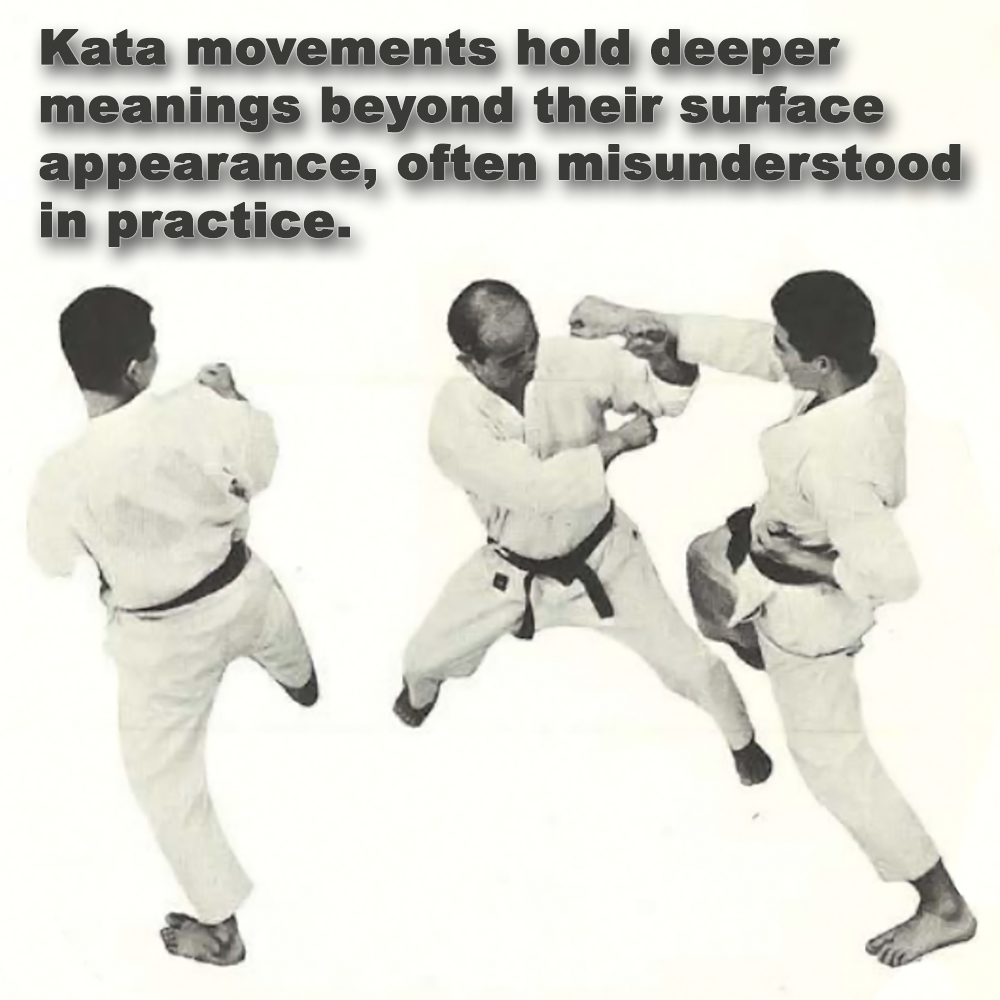
Kata movements hold deeper meanings beyond their surface appearance, often misunderstood in practice.
Posted by ADAM CARTER on MAY 10, 2024

Kata movements hold deeper meanings beyond their surface appearance, often misunderstood in practice.
(Approx 1 minute 40 second read)
When practitioners perform set kumite, drills, or sparring, they stand facing an opponent.
Why then do some practitioners, when performing applications to kata, wait for an opponent to attack from the side, anticipating blocking an attack?
It makes no sense does it? Yet this is how modern bunkai is performed.
Kenwa Mabuni one of the greatest kata exponents of the time stated; “When interpreting kata, one must not get too caught up in these directions. For example, do not fall into the trap of thinking that just because a kata begins to the left that the opponent is always attacking from the left.”
There is a misconception that the turns, when performing kata, represent where an enemy is attacking from. This is misleading. Mabuni tells us so.
The kata informs you to move TO an angle in relation to the enemy. It is not where they are attacking FROM.
Consider this: In set kumite, drills, or sparring, you face an opponent directly in front of you. In your kata application, instead of turning to face them, as you might have done before, whether by pre-emption or after an attack is initiated, aim to move to an angle suggested by the kata.
For example, many kata initially perform what seems like a left turn. But what you are actually trying to achieve is an angle in relation to your opponent. In other words, you have moved off their attack line.
An effective kata application should move us to a position of dominance with an attacker, which is NOT directly in front of them. You can of course consider moving them off the attack line too.
Any application which gets you to the point in which you are equal with your attacker, is not effective and useful. True effectiveness lies in achieving a dominant position.
Within kata it offers us a vast toolbox of principles and movements, not just a set of pre-programmed blocks against attacks from specific directions.
Students often encounter kata sequences that begin with facing forward, followed by a turn and a block. While seemingly logical, this interpretation falls short in real-world combat. It may look great in a demonstration showing an audience that you can fight against several opponents all waiting in turn to attack. But it’s not real.
If this is your focus, great, it’s all okay, as long as context is understood. Just be honest and inform your students that it has no basis in reality.
